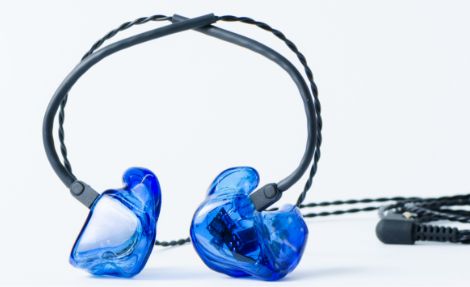Hearing Products
In the world of hearing aid technology, we’re all about finding the perfect fit for you. Picture this: discreet styles that seamlessly blend into your lifestyle, and features like advanced noise reduction that bring clarity to your conversations. And the best part? The hearing health professionals at Advanced Hearing Plus are here to guide you through it all. We’ll sit down with you, discuss your preferences and help you choose the ideal solution tailored just for you. It’s all about bringing you the best in hearing technology, with a personal touch.
Hearing Technology
Modern Solutions For All Types of Hearing Loss
Experience the latest advancements in hearing technology. From noise reduction features to Bluetooth connectivity, our sophisticated solutions are designed to enhance your auditory experience.
Explore a selection of cellphone accessories specially designed for hearing aid users. From wireless streaming devices to smartphone apps, these accessories enhance your communication experience and keep you connected effortlessly.
More on Cell Phone Accessories for Hearing AidsDiscover a range of hearing aid styles at Advanced Hearing Plus, each designed to cater to different preferences and lifestyles. From discreet in-the-canal options to powerful behind-the-ear models, our experts will help you find the perfect fit.
More on Hearing Aid StylesExperience cutting-edge hearing aid technology that goes beyond simple amplification. At Advanced Hearing Plus, we offer features like noise reduction, Bluetooth connectivity and rechargeable batteries, providing you with the best in auditory enhancement.
More on Hearing Aid TechnologyDiscover accessible hearing solutions with our over-the-counter options. These user-friendly devices provide a convenient way to enhance your hearing without the need for a prescription.
More on Over-the-Counter (OTC) Hearing Aids
Hearing Product Guide
Curious About Hearing Technology, but Not Sure Where to Start?
With so many styles and options, it can be difficult to know which products will suit your needs. Our Consumer Guide to Hearing Aids provides an in-depth breakdown of the different types of hearing devices, as well as the technology available for all types of hearing loss.
Hearing Aid Manufacturers
Hearing Products Created by the Best in the Industry
We partner with trusted hearing aid manufacturers known for their quality and innovation. Our selection includes industry-leading brands, ensuring you have access to the best in auditory enhancement.
Jabra Enhance Plus
Experience enhanced sound quality with Jabra Enhance Plus. These state-of-the-art devices offer advanced features like noise reduction and personalized sound settings, ensuring you enjoy clear and crisp audio.
View All ProductsLyric Hearing Aids & Accessories
Experience the freedom of invisible hearing with Lyric. These extended-wear hearing aids fit deep within the ear canal, providing clear and natural sound without the need for daily removal or maintenance.
View All ProductsOticon Hearing Aids & Accessories
As a trusted brand in hearing technology, Oticon offers a range of advanced hearing aids and accessories. From discreet in-ear options to powerful behind-the-ear models, Oticon provides solutions that cater to various preferences.
View All ProductsPhonak Hearing Aids & Accessories
Phonak is a leader in innovative hearing solutions. Discover a range of hearing aids and accessories that prioritize clarity, speech understanding and seamless connectivity, allowing you to engage fully in the world around you.
View All ProductsReSound Hearing Aids & Accessories
ReSound hearing aids and accessories are crafted with precision to deliver exceptional sound quality. With features like advanced connectivity and personalized sound profiles, ReSound ensures you experience clear and comfortable listening.
View All ProductsSennheiser Over the Counter (OTC) Self-Fitting Hearing Aids & Accessories
View All ProductsSignia Hearing Aids & Accessories
Signia is synonymous with cutting-edge hearing solutions. Explore a range of hearing aids and accessories designed to deliver superior sound quality and advanced features that adapt to your unique listening environment.
View All ProductsWidex Hearing Aids & Accessories
Widex offers a comprehensive range of hearing aids and accessories designed to provide exceptional sound quality and comfort. With a focus on technology, Widex ensures you enjoy a superior listening experience.
View All ProductsStarkey Hearing Aids & Accessories
Starkey believes that quality hearing and clear communication means better physical and mental health. That’s why they design hearing aids that work with the natural anatomy of your ear, helping you hear and interpret sounds as naturally as possible.
View All ProductsUnitron Hearing Aids & Accessories
Unitron aims to empower people with hearing loss with the technology and personalized solutions to get the most out of life. Their hearing aids combine aesthetics, comfort and practicality to help you communicate your best and connect with the world around you.
View All ProductsHearing Protection
Make Protection a Priority
Safeguard your hearing in noisy environments with our range of hearing protection options. From custom earplugs to earmuffs, we offer solutions that prioritize your auditory well-being without compromising comfort.
For avid shooters, our electronic shooters protection offers a vital solution to protect your hearing without sacrificing situational awareness. These advanced devices use state-of-the-art technology to amplify ambient sounds while instantly suppressing harmful gunshots.
More on Electronic Shooters ProtectionIn noisy environments, safeguard your hearing with our comprehensive range of hearing protection solutions. From custom-molded earplugs to earmuffs, we provide options that ensure your ears stay safe without compromising comfort.
More on Hearing Protection
Assistive Listening Technology
Additional Tools to Support Clear Communication
Discover a range of assistive listening devices designed to complement your hearing aids. From TV streamers to remote microphones, these accessories enhance your listening experience in specific situations or environments.










